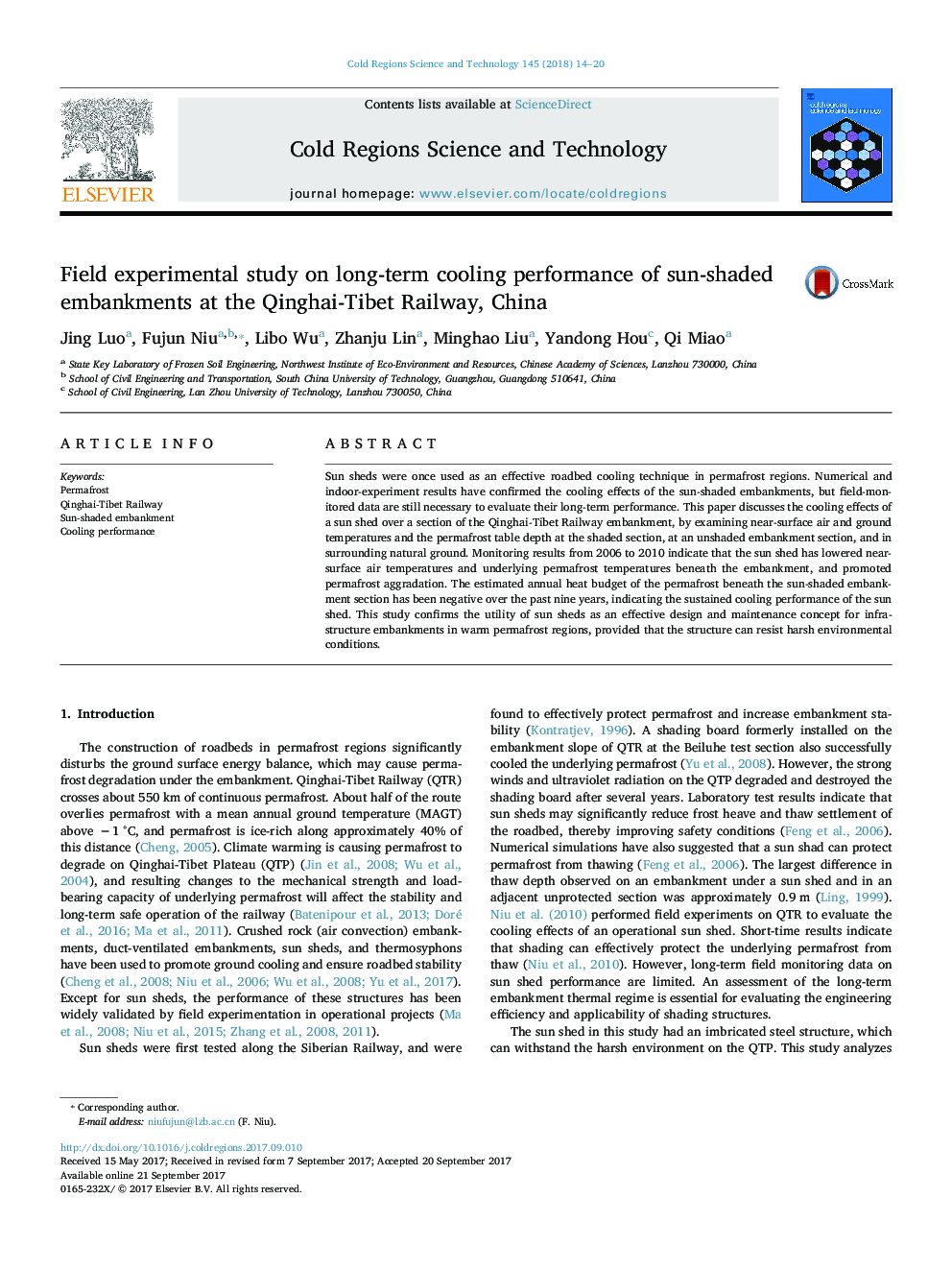| Article ID | Journal | Published Year | Pages | File Type |
|---|---|---|---|---|
| 5779319 | Cold Regions Science and Technology | 2018 | 7 Pages |
â¢Long-term monitored data are presented for a sun-shaded embankment along the Qinghai-Tibet Railway.â¢The variations of ground temperature, permafrost table and surface-air temperature are analyzed.â¢Sustained cooling performance of the sun-shaded embankment is evaluated and discussed.
Sun sheds were once used as an effective roadbed cooling technique in permafrost regions. Numerical and indoor-experiment results have confirmed the cooling effects of the sun-shaded embankments, but field-monitored data are still necessary to evaluate their long-term performance. This paper discusses the cooling effects of a sun shed over a section of the Qinghai-Tibet Railway embankment, by examining near-surface air and ground temperatures and the permafrost table depth at the shaded section, at an unshaded embankment section, and in surrounding natural ground. Monitoring results from 2006 to 2010 indicate that the sun shed has lowered near-surface air temperatures and underlying permafrost temperatures beneath the embankment, and promoted permafrost aggradation. The estimated annual heat budget of the permafrost beneath the sun-shaded embankment section has been negative over the past nine years, indicating the sustained cooling performance of the sun shed. This study confirms the utility of sun sheds as an effective design and maintenance concept for infrastructure embankments in warm permafrost regions, provided that the structure can resist harsh environmental conditions.
